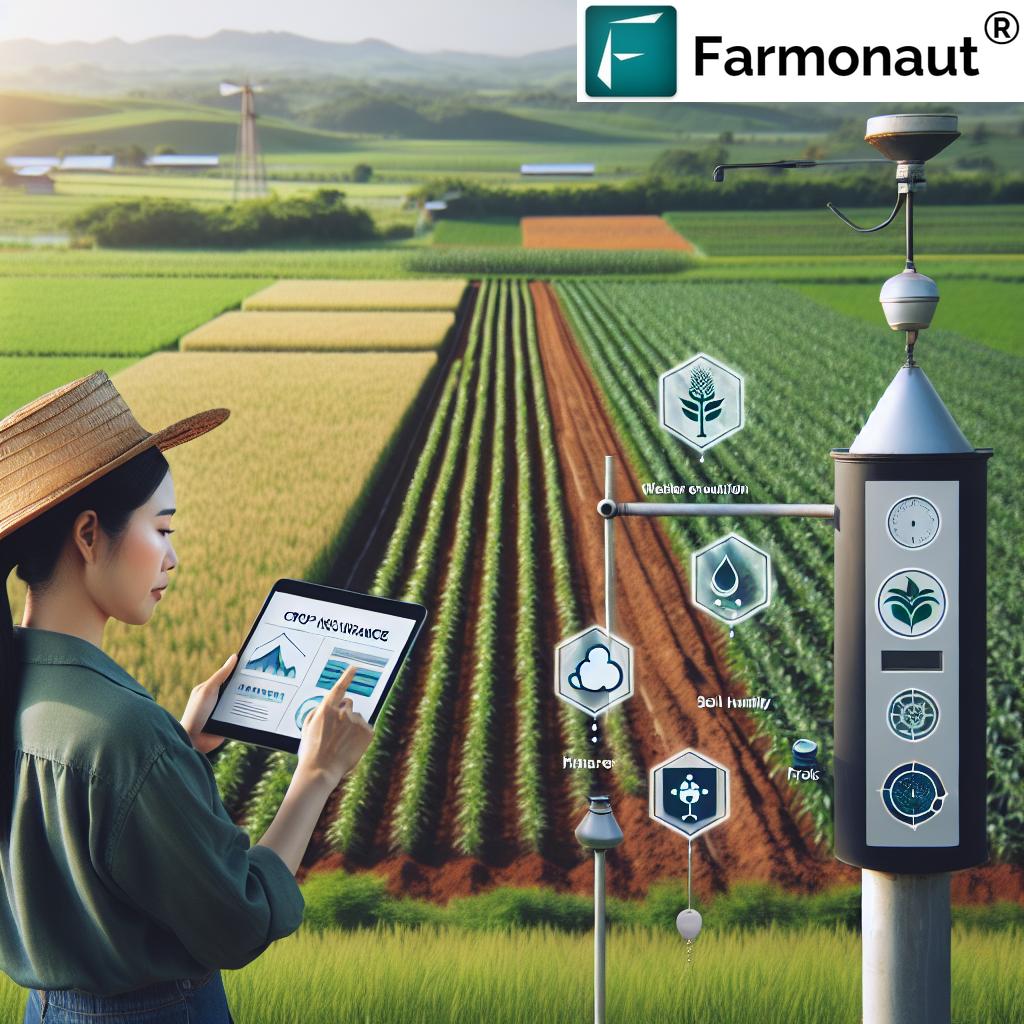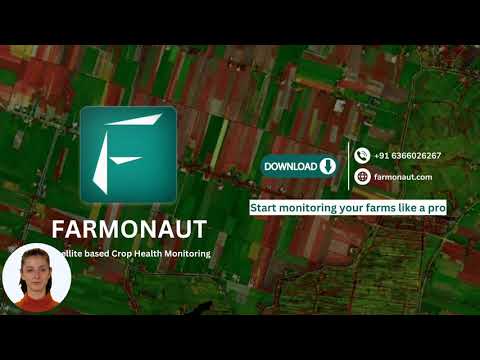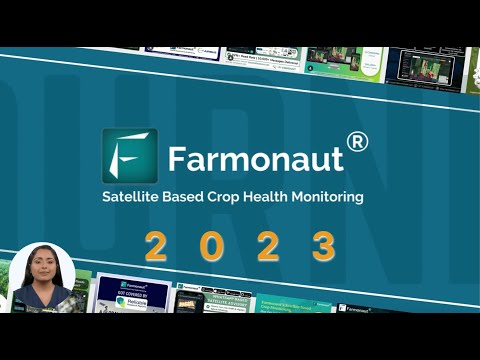2023 Crop Insurance Guide: Essential Risk Management Tools for Farmers in the United States

“Over 80% of U.S. crop production is protected by federal crop insurance programs, safeguarding farmers against various risks.”
Welcome to our comprehensive 2023 Crop Insurance Guide, where we explore essential risk management tools for farmers in the United States. As we navigate the ever-changing landscape of agriculture, it’s crucial to stay informed about the latest developments in crop insurance and risk management strategies. In this blog post, we’ll delve into the intricacies of agricultural risk management, farm viability strategies, and innovative tools that are shaping the future of sustainable agriculture.
The Evolving Landscape of Crop Insurance
The agricultural sector in the United States faces numerous challenges, from unpredictable weather patterns to market fluctuations. As a result, crop insurance has become an indispensable tool for farmers seeking to protect their livelihoods. In 2023, we’re witnessing a revolution in how crop insurance is approached, with technology playing a pivotal role in enhancing its effectiveness.
At Farmonaut, we’re at the forefront of this transformation, leveraging advanced satellite-based farm management solutions to provide farmers with real-time insights into their crop health and potential risks. Our android, iOS, and web applications, along with our robust API, are designed to make precision agriculture accessible and affordable for farmers of all sizes.
Key Components of Modern Crop Insurance
- Multi-Peril Crop Insurance (MPCI): Covers loss of crop yields from various natural causes.
- Whole-Farm Revenue Protection: Insures all commodities on a farm under one policy.
- Crop-Hail Insurance: Specific coverage for damage caused by hail storms.
- Pasture, Rangeland, Forage Insurance: Protects against losses in forage production.
Each of these insurance types plays a crucial role in a comprehensive risk management strategy. Let’s explore them in more detail:
| Insurance Type | Coverage | Risks Addressed | Ideal for | Technology Integration |
|---|---|---|---|---|
| Multi-Peril Crop Insurance | Yield and revenue losses | Drought, flood, pests, disease | Most crop farmers | Satellite monitoring for early risk detection |
| Whole-Farm Revenue Protection | Farm-wide revenue | Market fluctuations, yield losses | Diversified farms, specialty crops | AI-driven yield predictions and market analysis |
| Crop-Hail Insurance | Hail damage | Hail storms | High-value crops in hail-prone areas | Real-time weather alerts and damage assessment |
| Pasture, Rangeland, Forage Insurance | Forage and grazing losses | Drought, lack of precipitation | Livestock producers, hay farmers | Vegetation index monitoring and rainfall tracking |
As we can see, each insurance type caters to specific needs and risks faced by different types of agricultural operations. The integration of technology, such as Farmonaut’s satellite-based solutions, enhances the effectiveness of these insurance products by providing accurate, timely data for risk assessment and claims processing.
Innovative Risk Management Tools for Farmers
In addition to traditional insurance policies, farmers now have access to a range of innovative tools to manage risk effectively. These tools leverage cutting-edge technology to provide real-time insights and actionable data.
- Satellite-Based Crop Monitoring: Farmonaut’s platform uses multispectral satellite imagery to track crop health, soil moisture levels, and other critical metrics. This data helps farmers make informed decisions about irrigation, fertilizer usage, and pest management.
- AI-Powered Advisory Systems: Our Jeevn AI system delivers personalized farm advice, weather forecasts, and expert crop management strategies, improving farm productivity and efficiency.
- Blockchain-Based Traceability: We offer blockchain solutions that ensure transparency and security in agricultural supply chains, enhancing trust and reducing fraud.
- Fleet and Resource Management: Our tools optimize vehicle usage and improve the management of agricultural machinery, reducing operational costs.
- Carbon Footprint Tracking: We help agribusinesses monitor and reduce their environmental impact, promoting sustainability and compliance with environmental regulations.
Explore our advanced farm management solutions:
The Role of Technology in Agricultural Risk Management
Technology is playing an increasingly crucial role in agricultural risk management. At Farmonaut, we’re leveraging advanced technologies to provide farmers with the tools they need to make informed decisions and mitigate risks effectively.
Learn more about our API solutions: Farmonaut API
For developers: API Developer Docs
Comprehensive Crop Insurance Plans
Comprehensive crop insurance plans are essential for protecting farmers against a wide range of risks. These plans typically include coverage for:
- Yield losses due to natural disasters
- Price fluctuations in the market
- Revenue protection
- Replanting costs
- Prevented planting due to adverse conditions
In 2023, we’re seeing a trend towards more flexible and customizable insurance plans that can be tailored to the specific needs of individual farms. This is particularly important for farmers in diverse agricultural operations, including specialty crops and organic farming.
Whole-Farm Revenue Protection
“Whole-farm revenue protection policies can cover up to 85% of a farm’s revenue, including specialty and organic crops.”
Whole-farm revenue protection (WFRP) is an innovative insurance option that provides coverage for all commodities on a farm under a single policy. This type of insurance is particularly beneficial for:
- Diversified farms with multiple crop types
- Organic farmers
- Specialty crop producers
- Farmers with livestock operations
WFRP policies are designed to protect a farm’s revenue stream as a whole, rather than focusing on individual crops. This approach provides more comprehensive coverage and can be especially valuable for farms with unique or varied operations.
Livestock Insurance Options
While much of the focus in agricultural insurance is on crops, livestock insurance is equally important for many farmers. In 2023, we’re seeing an expansion of livestock insurance options, including:
- Livestock Risk Protection (LRP): Protects against market price declines
- Livestock Gross Margin (LGM): Insures the margin between the cost of feed and the market value of livestock
- Pasture, Rangeland, Forage (PRF) Insurance: Covers losses of forage used for grazing or harvested for hay
These insurance options help livestock producers manage the unique risks associated with animal agriculture, including market volatility and weather-related forage losses.

Urban Farming Challenges and Insurance Solutions
Urban farming is a growing trend, but it comes with its own set of challenges and risks. Some of the unique insurance needs for urban farmers include:
- Property insurance for vertical farming structures
- Liability coverage for farm-to-table operations
- Specialized coverage for hydroponic and aquaponic systems
- Protection against contamination risks in urban environments
At Farmonaut, we recognize the importance of supporting urban agriculture. Our satellite-based monitoring solutions can be adapted to provide valuable insights for urban farmers, helping them optimize their operations and manage risks effectively.
Climate-Smart Farming Practices and Insurance
As climate change continues to impact agriculture, there’s a growing emphasis on climate-smart farming practices. Insurance providers are beginning to offer incentives for farmers who implement these practices, which can include:
- Cover cropping
- No-till or reduced tillage farming
- Precision agriculture techniques
- Water conservation methods
- Integrated pest management
By adopting these practices, farmers can not only reduce their environmental impact but also potentially lower their insurance premiums. Farmonaut’s technology supports these efforts by providing detailed insights into soil health, water usage, and crop performance, enabling farmers to make data-driven decisions that align with climate-smart principles.
Navigating Agricultural Policies for Beginning Farmers
For beginning farmers, understanding and navigating agricultural policies can be particularly challenging. Here are some key points to consider:
- Special provisions for new farmers: Many insurance programs offer special rates or additional coverage options for beginning farmers.
- Educational resources: The USDA and other organizations provide extensive educational materials and training programs for new farmers.
- Mentorship programs: Connecting with experienced farmers can provide valuable insights into risk management strategies.
- Technology adoption: Embracing tools like Farmonaut’s platform can help new farmers quickly gain insights into their operations and make informed decisions.
We encourage beginning farmers to take advantage of these resources and consider how technology can support their risk management efforts from the start of their farming careers.
The Future of Agricultural Risk Management
Looking ahead, we anticipate several trends that will shape the future of agricultural risk management:
- Increased use of data analytics: More sophisticated data analysis will lead to more accurate risk assessments and tailored insurance products.
- Integration of climate models: Insurance providers will incorporate advanced climate models to better predict and price long-term risks.
- Blockchain for transparency: The use of blockchain technology will enhance transparency in insurance claims and payouts.
- Parametric insurance products: These products, which pay out based on predefined triggers rather than assessed losses, may become more common.
- Emphasis on sustainability: Insurance products will increasingly incentivize sustainable farming practices.
At Farmonaut, we’re committed to staying at the forefront of these trends, continuously innovating our platform to provide farmers with the most advanced risk management tools available.
Farmonaut’s Role in Agricultural Risk Management
As we’ve discussed throughout this guide, technology plays a crucial role in modern agricultural risk management. Farmonaut’s platform offers a range of tools that complement and enhance traditional insurance products:
- Real-time crop monitoring: Our satellite-based monitoring provides up-to-date information on crop health, helping farmers identify and address issues before they become significant problems.
- AI-powered insights: Our Jeevn AI system offers personalized recommendations, helping farmers make informed decisions about crop management and risk mitigation.
- Weather forecasting: Accurate, localized weather forecasts help farmers prepare for potential risks and optimize their operations.
- Resource optimization: Our tools for fleet and resource management help farmers reduce operational costs and improve efficiency.
- Sustainability tracking: Our carbon footprint monitoring tools support farmers in adopting and documenting sustainable practices, which can lead to better insurance terms and access to sustainability-focused markets.
By leveraging these technologies, farmers can take a proactive approach to risk management, potentially reducing their reliance on insurance payouts and improving the overall resilience of their operations.
Conclusion
As we’ve explored in this 2023 Crop Insurance Guide, effective risk management is crucial for the success and sustainability of farming operations in the United States. From comprehensive crop insurance plans to innovative technological solutions, farmers have a wide array of tools at their disposal to protect their livelihoods and ensure the stability of the agricultural sector.
At Farmonaut, we’re proud to be part of this evolving landscape, offering cutting-edge solutions that empower farmers to make data-driven decisions and manage risks more effectively. As we look to the future, we remain committed to innovation and to supporting farmers in their vital work of feeding the world.
We encourage all farmers, whether you’re just starting out or have been in the business for generations, to stay informed about the latest developments in agricultural risk management and to consider how technology can enhance your operations. By combining traditional insurance products with advanced technological solutions, we can build a more resilient and sustainable agricultural sector for years to come.
FAQ Section
Q: What is crop insurance?
A: Crop insurance is a risk management tool that protects agricultural producers from crop yield and/or revenue losses due to natural disasters or market fluctuations.
Q: How does whole-farm revenue protection differ from traditional crop insurance?
A: Whole-farm revenue protection covers all commodities on a farm under one policy, protecting overall farm revenue rather than individual crops.
Q: Can urban farmers benefit from crop insurance?
A: Yes, there are specialized insurance options available for urban farmers that address their unique risks and operational needs.
Q: How does technology like Farmonaut’s platform enhance crop insurance?
A: Farmonaut’s technology provides real-time crop monitoring and AI-driven insights, helping farmers make informed decisions and potentially reducing insurance claims through proactive risk management.
Q: Are there special insurance considerations for organic farmers?
A: Yes, there are specific insurance options tailored to organic farming operations, including coverage for the higher value of organic crops.
Q: How can beginning farmers navigate the complexities of crop insurance?
A: Beginning farmers can take advantage of educational resources provided by the USDA, seek mentorship from experienced farmers, and utilize technology platforms like Farmonaut to gain insights into their operations.
Farmonaut Subscriptions






